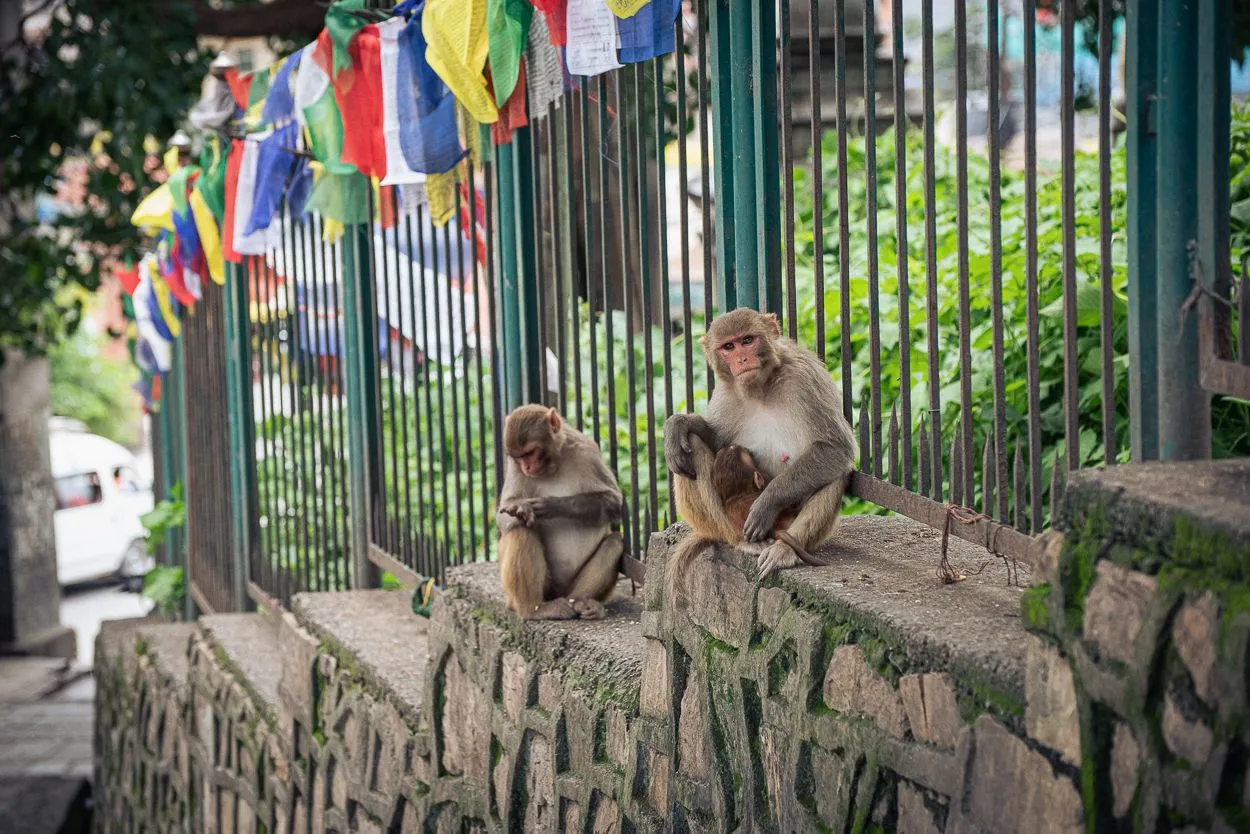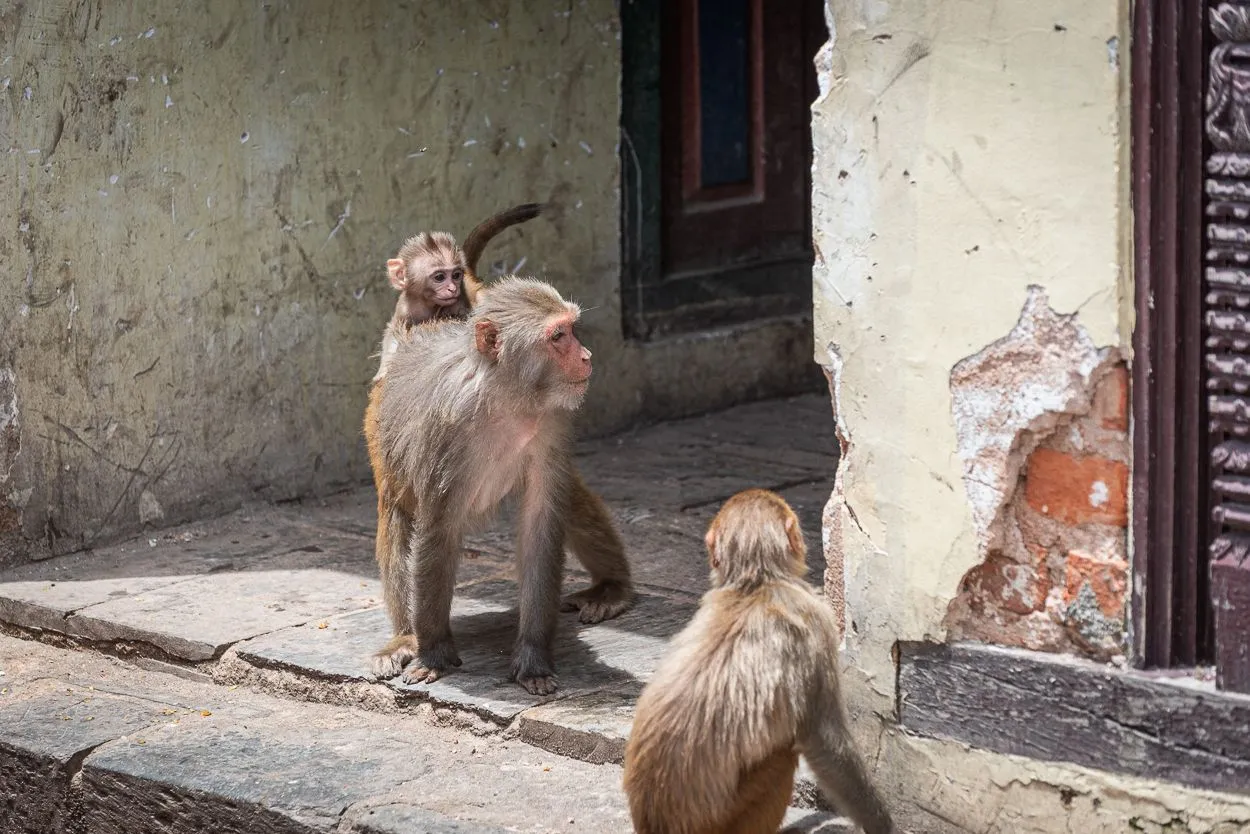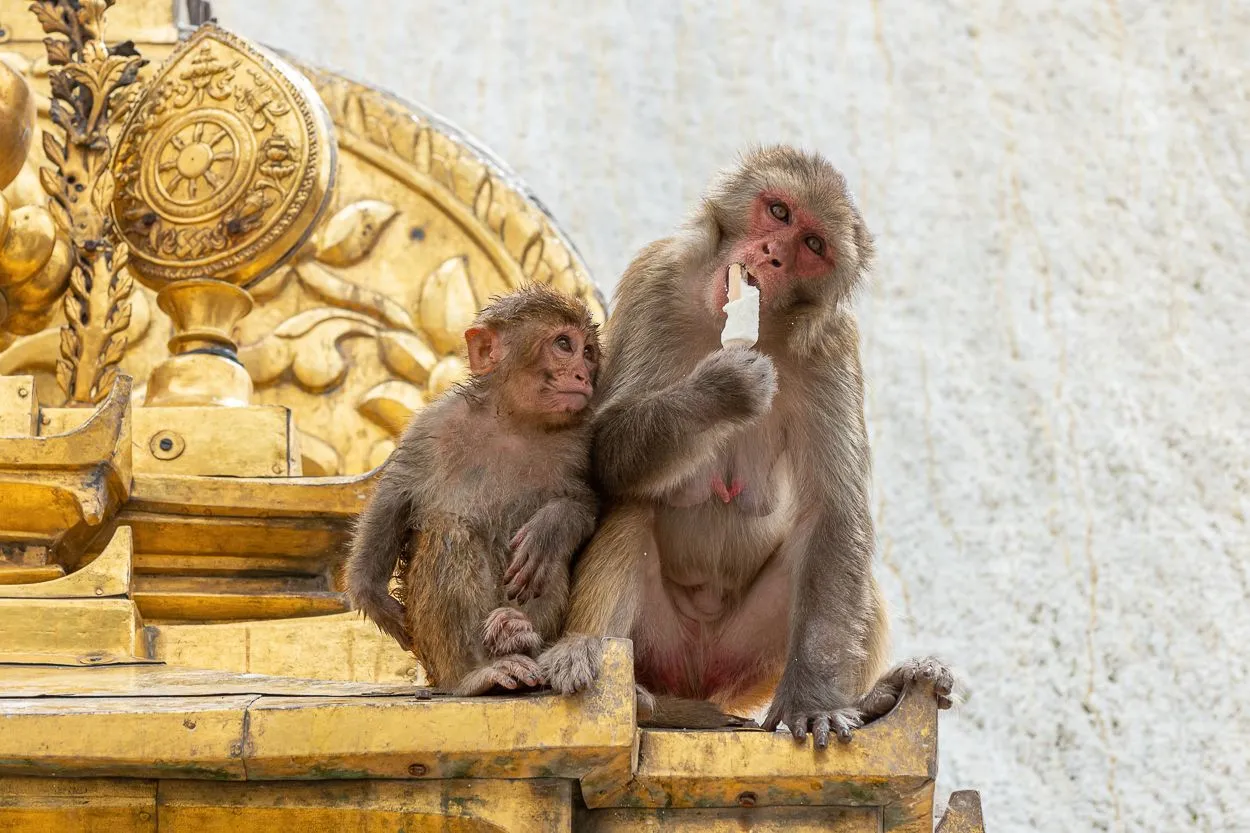
Me in Kathmandu - the blue circle:

Only 1 km to the wooded mountain range - no surprise I once saw monkeys near my homestay.
I'll walk closer to the forest in the hope of meeting Assam macaques - the species I've never encountered yet. If I am unlucky, I'll find only regular rhesus monkeys there. The latter also live in the green area at the map's bottom - Swayambhunath temple I recently posted about. Sharing here a set of pictures of this species.

Rhesus macaques do resemble their cousins living in Thai cities, but they aren't the same.

Kathmandu rhesus macaques (Macaca mulatta) are more hairy than their Thai relatives, crab-eating macaques (Macaca fascicularis). It's because it can drop close to 0°C in winter here.

Another distinctive feature is their color - Kathmandu monkeys have much more orange, especially on the rear half of their bodies.
Rhesus monkeys of Kathmandu have 2+ times shorter tails than crab-eating macaques in Thailand.
Probably, the long tail means Thai macaques prefer climbing trees while rhesus monkeys feel comfortable on the ground too. This may correlate with the fact that rhesus kids often ride their moms sitting on their backs:

Crab-eating baby macaques normally hang below their moms' bellies - this way.
What is common between these two species is their wicked temper, lol:

A hostile dwarf riding his rogue mama. 😁
Macaques are sometimes surprisingly cruel towards monkey kids. Macaque moms are not an exception - they can be harsh as hell dealing with their offspring when they are out of control.

But normally, moms are moms.

Breastfeeding and grooming -

that's where moms devotedly serve their tiny masters (even when they aren't that tiny anymore).

But when it comes to sharing food, they are less generous:

The child is asking, "Please, mommy, please".
And that's mommy's reply:

NO!
She didn't even allow the kid to try.
NB: Feeding urban monkeys with ice cream isn't a good idea. Natural products like fruits fit much better.
Okay, let's look around:

Swayambhunath Temple offers stunning opportunities for monkey photography as it is where macaques, people, art, and vistas meet.
Here, you see the mountains rimming the city. The area is called Kathmandu Valley, and an ancient Buddhist scripture says that there was a lake in its place many eons ago.

The lake was inhabited by Nagas, the divine serpent race, but it got drained by Manjushri, one of the old-time Buddhas, in order to make Swayambhunath accessible for pilgrims wishing to see mysterious radiant light shining there. Nowadays, this light is protected by Swayambhunath Stupa built on top of it. As for the Nagas, they were offered another lake to live. That's what the Buddhist scripture says.
It is also explained how the monkeys appear on the hill: Buddha Manjushri had long hair infested with lice. Those lice that fell down from his head turned into monkeys - the source.
If you don't trust legends, I'll give you a scientific explanation:
Back to the 21st century:

The temple is a real playground for the monkeys, especially the young ones and juveniles.

They climb each roof there, they climb even the main stupa itself.

That's how tiny Hanuman's warriors spend their leisure time - stupa-climbing:

Too steep - a difficult task even for monkeys.

Let me finish my report on the rhesus monkeys of Swayambhunath with a photo of another furry creature:

He was reclining this way among people and monkeys,

and nothing could shake his calm (except for my excessive attention, but seeing his stern look, I left him alone).
Thanks for reading/watching, stay tuned! 😉
All photos were taken with a Nikkor 70-300mm and a Nikkor 24mm on a full-frame DSLR Nikon D750 by the author on July 16, 2025, in Kathmandu, Nepal